Author | CoinMarketCap Research & Footprint Analytics
Produced by | Baihua Blockchain
The role of Bitcoin in DeFi (Decentralized Finance) is undergoing a significant transformation. From its initial design as a simple peer-to-peer transfer system, the world's first cryptocurrency is now gradually rising to become a powerful force in the DeFi space, beginning to challenge Ethereum's long-standing dominance.
By comprehensively interpreting the current state and growth trajectory of the Bitcoin ecosystem through on-chain data, we have discovered a clear picture: BTCFi (the combination of Bitcoin and DeFi) is not just a technical shift, but may also trigger a paradigm shift in Bitcoin's role within DeFi. As we will explore in depth, the impact of this transformation could redefine the landscape of the entire DeFi sector.
01. The Rise of BTCFi
In 2008, Satoshi Nakamoto introduced Bitcoin, initially designed as a peer-to-peer electronic cash system. While this architecture is revolutionary in the realm of crypto assets, it has clear limitations in more complex financial applications (such as DeFi).
02. The Original Design of Bitcoin and Its Limitations in DeFi
Core Design Elements and Their Limitations:
1) UTXO Model: Bitcoin uses an Unspent Transaction Output (UTXO) model, which is effective for handling simple transfers but lacks the flexibility needed to support complex smart contracts.
2) Limited Script Language: Bitcoin's script language is intentionally limited to avoid security vulnerabilities. However, this limitation also hinders its ability to support complex DeFi applications due to the limited number of executable opcodes.
3) Lack of Turing Completeness: Unlike Ethereum, Bitcoin's script is not Turing complete, making it difficult to implement complex state-dependent smart contracts, which are crucial for many DeFi protocols.
4) Block Size and Transaction Speed: Bitcoin's 1MB block size limit and 10-minute block generation time result in transaction processing speeds that are far below those of other blockchains focused on DeFi.
While these design choices enhance Bitcoin's security and decentralization, they also create barriers to directly implementing DeFi functionalities on the Bitcoin blockchain. The lack of native support for features like loops, complex conditions, and state storage makes it very challenging to build applications such as DEXs, lending platforms, or liquidity mining protocols on Bitcoin.
03. Early Attempts and Developments in Introducing DeFi on Bitcoin
Despite these limitations, Bitcoin's strong security and widespread adoption have prompted developers to seek innovative solutions:
1) Colored Coins (2012-2013): This was one of the early attempts to extend Bitcoin's functionality. Colored coins represent and transfer real-world assets by "coloring" specific bitcoins and attaching unique metadata. While not true DeFi, it laid the groundwork for developing more complex financial applications on Bitcoin.
2) Counterparty (2014): This protocol introduced the ability to create and trade custom assets on the Bitcoin blockchain, including the first NFT. Counterparty demonstrated the potential for developing more complex financial instruments on Bitcoin.
3) Lightning Network (2015-Present): The Lightning Network is a second-layer protocol aimed at enhancing transaction scalability. It opens up possibilities for more complex financial interactions through the introduction of payment channels, including some early DeFi applications.
4) Discreet Log Contracts (DLC) (2017-Present): Proposed by Tadge Dryja, DLCs allow for the implementation of complex financial contracts without altering the underlying Bitcoin layer, providing new possibilities for derivatives and other DeFi tools.
5) Liquid Network (2018-Present): Developed by Blockstream, this sidechain-based settlement network supports the issuance of crypto assets and more complex Bitcoin transactions, paving the way for DeFi-like applications.
6) Taproot Upgrade (2021): By introducing Merkleized Abstract Syntax Trees (MAST), Taproot compresses complex transactions into a single hash, reducing transaction fees and memory usage. While not a DeFi solution itself, it enhances Bitcoin's smart contract capabilities, making it easier and more efficient to implement complex transactions, laying the foundation for future DeFi developments.
These early developments laid the groundwork for expanding Bitcoin's functionality from simple transfers to more applications. Despite the challenges of introducing DeFi on Bitcoin, these innovations also showcase the potential of the Bitcoin ecosystem. These foundations have paved the way for a wave of innovations in second-layer solutions, sidechains, and Bitcoin DeFi, which we will explore in depth next.
04. Key Innovations: Implementing Smart Contracts on Bitcoin
In recent years, several protocols have emerged in the Bitcoin ecosystem aimed at introducing smart contracts and DeFi functionalities to the world's first cryptocurrency. These innovations are changing the use of Bitcoin, making it more than just a store of value or medium of exchange. Here are some of the main protocols driving the implementation of smart contracts on Bitcoin:
1) Rootstock: As a pioneer of Bitcoin smart contracts, Rootstock is the longest-running Bitcoin sidechain and has become an important foundation for the BTCFi ecosystem.
It utilizes 60% of Bitcoin's hash power, supports dual mining, and is compatible with the Ethereum Virtual Machine (EVM), allowing Ethereum smart contracts to run on Bitcoin. Rootstock's unique Powpeg mechanism ensures seamless conversion between Bitcoin (BTC) and Rootstock Bitcoin (RBTC), and its "depth defense" security model emphasizes simplicity and robustness.
Since the mainnet launch in 2018, on-chain activity on Rootstock has steadily increased, with Footprint Analytics noting its establishment as a stable and scalable solution within the Bitcoin ecosystem.
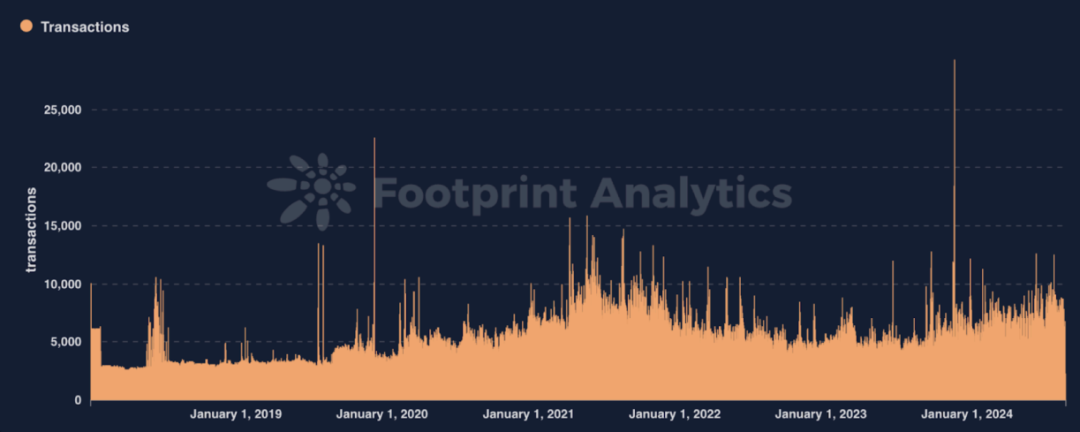
2) Core: Core is a blockchain based on Bitcoin that is closely integrated with Bitcoin and compatible with the Ethereum Virtual Machine (EVM).
Core stands out with its innovative dual-staking model, which combines Bitcoin and Core. Through non-custodial Bitcoin staking, Core establishes a risk-free yield for Bitcoin, effectively transforming Bitcoin into a yield-bearing asset. Core reports that 55% of Bitcoin mining hash power is delegated to its network, enhancing its security in DeFi applications.
3) Merlin Chain: Merlin Chain is a relatively new Bitcoin second-layer network that aims to unlock Bitcoin's DeFi potential and is gaining increasing attention. It integrates ZK-Rollup technology, decentralized oracles, and on-chain anti-fraud modules, providing a full suite of DeFi functionalities for Bitcoin holders. The M-BTC launched by Merlin is a wrapped Bitcoin asset that earns staking rewards, opening new avenues for yield generation and participation in DeFi.
4) BEVM: BEVM represents a significant advancement in directly bringing Ethereum's extensive DeFi ecosystem to Bitcoin. As the first fully decentralized and EVM-compatible Bitcoin second-layer network, BEVM uses Bitcoin as fuel, allowing for the seamless deployment of Ethereum decentralized applications (DApps) on Bitcoin. Supported by mining giant Bitmain, BEVM introduces the concept of "hash power RWA," potentially unlocking new value dimensions for the Bitcoin ecosystem.
Key Innovations in Bitcoin Second-Layer Networks and Sidechains:
- Tokenization of Bitcoin assets;
- Smart contracts and EVM compatibility;
- Yield-bearing Bitcoin;
- Scalability and privacy enhancements.
These protocols are not merely replicating Ethereum's DeFi strategies on Bitcoin but are opening new directions by leveraging Bitcoin's unique characteristics. From Rootstock's depth defense mechanism to Core's dual-staking model, and from Merlin's comprehensive DeFi solutions to BEVM's hash power RWA innovation, the BTCFi space is rapidly evolving.
As of September 8, 2024, the total locked value (TVL) of Bitcoin's second-layer solutions and sidechains reached $1.07 billion, growing 5.7 times since January 1, 2024, and an astonishing 18.4 times since January 1, 2023.
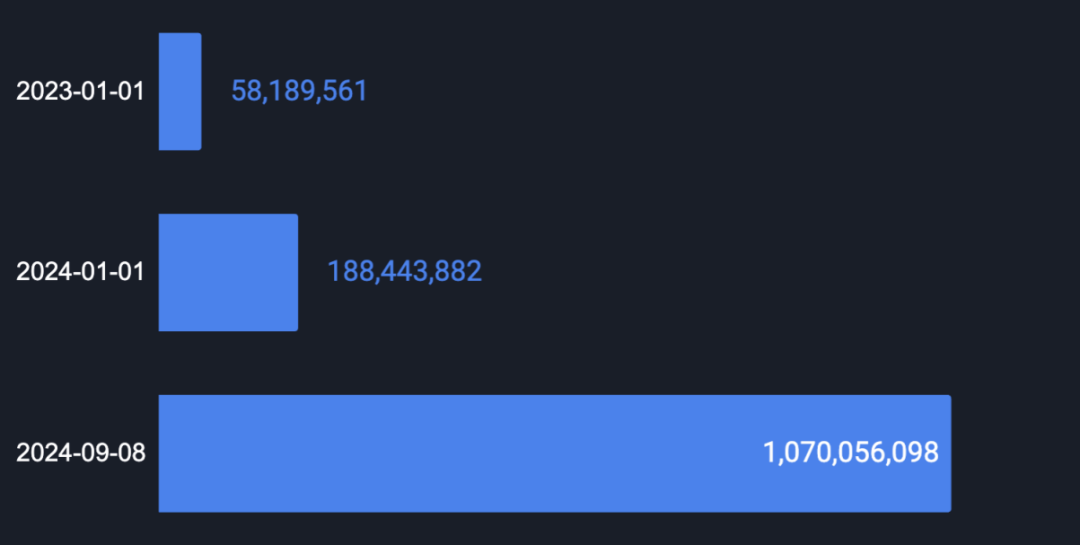

Core leads with 27.6% of the total locked value (TVL), followed by Bitlayer at 25.6%; Rootstock at 13.8%; and Merlin Chain at 11.0%.

05. The Current State of Bitcoin DeFi
As the Bitcoin DeFi ecosystem continues to evolve, several key projects have emerged as important players, driving innovation and user adoption. These projects rely on Bitcoin's second-layer solutions and sidechains to provide a variety of DeFi services:
1) Major BTCFi Projects
Pell Network (Multi-chain)
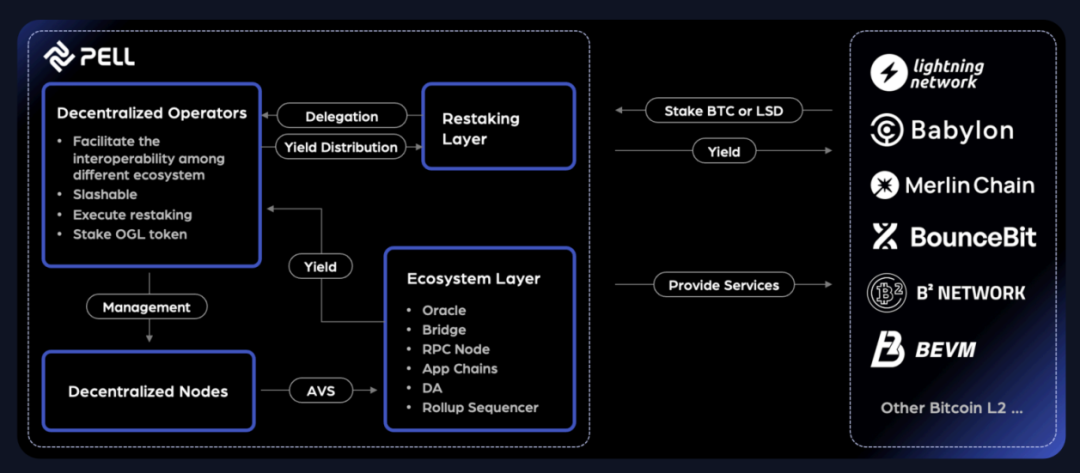
Pell Network is a cross-chain re-staking protocol designed to enhance the security of the Bitcoin ecosystem and optimize yields. Users earn rewards by staking Bitcoin or liquid staking derivatives (LSD), while decentralized operators run validation nodes to ensure network security. Pell offers a range of actively validated services, such as oracles, cross-chain bridges, and data availability, supporting a broader Bitcoin second-layer ecosystem. With its robust infrastructure, Pell aims to become a key player in providing liquidity and ensuring the security of the crypto economy, driving sustainable growth in the Bitcoin economy.
Avalon Finance (Multi-chain)
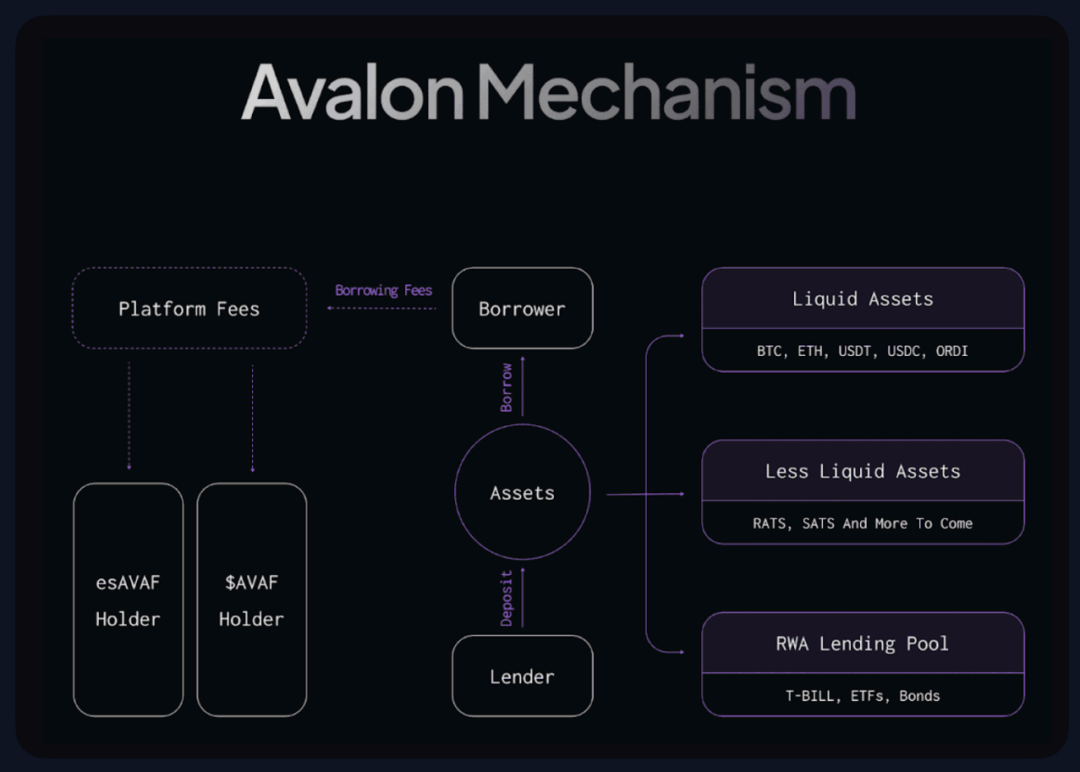
Avalon Finance is a multi-chain DeFi platform that spans Bitlayer, Core, and Merlin Chain, known for providing comprehensive borrowing and trading services within the BTC DeFi ecosystem. Avalon’s main services include over-collateralized borrowing against major assets and low-liquidity assets, with dedicated isolation pools. The platform also integrates derivatives trading, enhancing the functionality of its borrowing services. Additionally, Avalon has launched an algorithmic stablecoin aimed at optimizing capital efficiency, making it a versatile and secure DeFi solution within the Bitcoin ecosystem. Its governance token AVAF adopts the ES Token model, incentivizing liquidity provision and protocol usage.
Colend Protocol (Core)
Colend Protocol is a decentralized lending platform built on the Core blockchain, allowing users to securely borrow against Bitcoin and other assets. By leveraging Core's dual-staking model, Colend seamlessly integrates with the broader DeFi ecosystem, enhancing Bitcoin's utility in DeFi. Its main features include decentralized and immutable transactions, liquidity pools with various dynamic interest rates, and a flexible collateral system.
MoneyOnChain (Rootstock)
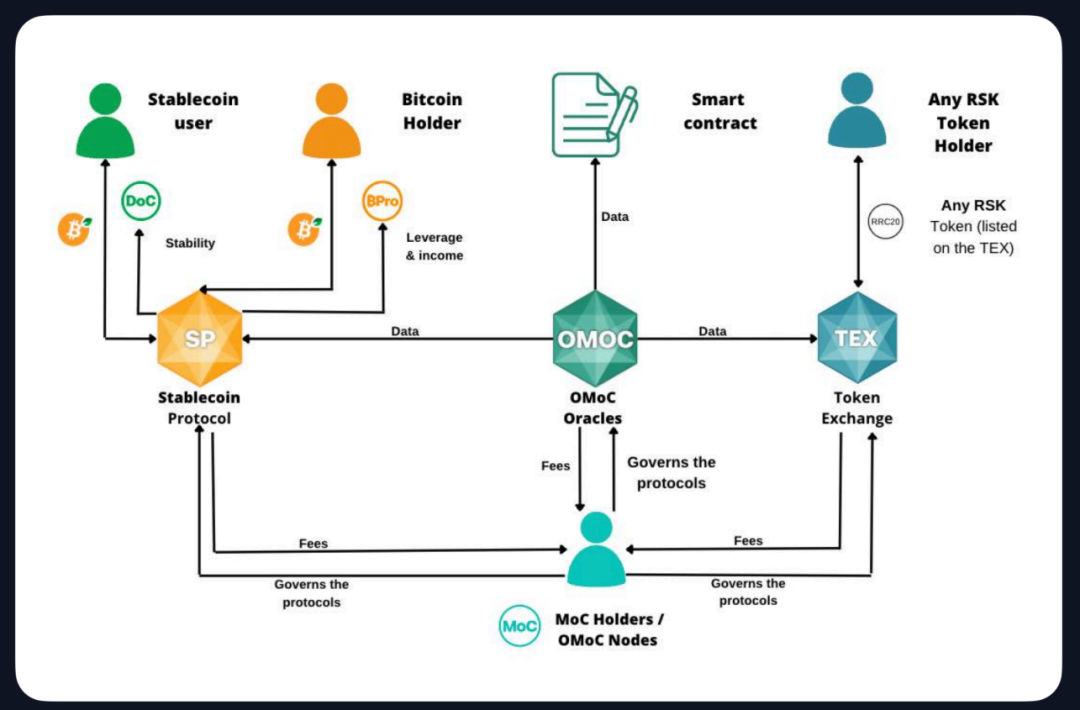
MoneyOnChain is a comprehensive DeFi protocol built on Rootstock that allows Bitcoin holders to enhance asset yields while retaining full control of their private keys. The core of the protocol is the issuance of a stablecoin called Dollar on Chain (DoC), which is fully collateralized by Bitcoin and designed for users who wish to maintain the value of their Bitcoin holdings pegged to the US dollar. Additionally, MoneyOnChain offers the BPRO token, enabling users to gain leveraged exposure to Bitcoin for passive income.
The protocol's architecture is based on a risk-sharing mechanism, employing proprietary financial models to address extreme market volatility. It also includes a decentralized token trading platform (TEX), decentralized oracles (OMoC), and a governance token (MoC), allowing users to participate in protocol decision-making, staking, and earning rewards.
Sovryn (Multi-chain)
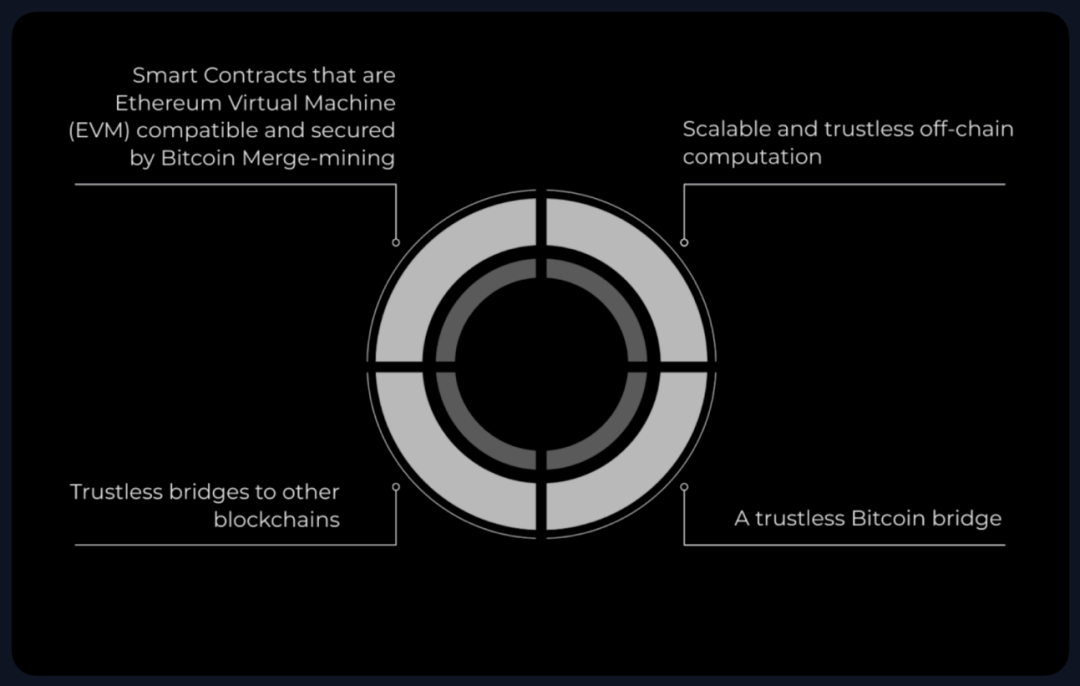
Sovryn is a DEX and one of the most feature-rich DeFi platforms built on Bitcoin, designed to enable users to trade, borrow, and earn yields using Bitcoin. Sovryn spans both BOB and Rootstock platforms, offering a variety of DeFi services, including trading, swapping, liquidity provision, staking, and borrowing. The platform focuses on creating a permissionless financial layer for Bitcoin and integrates with other blockchains, making it a unique multi-chain platform within the Bitcoin DeFi ecosystem.
Sovryn's governance token SOV plays a key role in managing the decentralized protocol through a Bitocracy system, representing voting rights and rewarding actively participating users.
Solv Protocol (Merlin Chain)
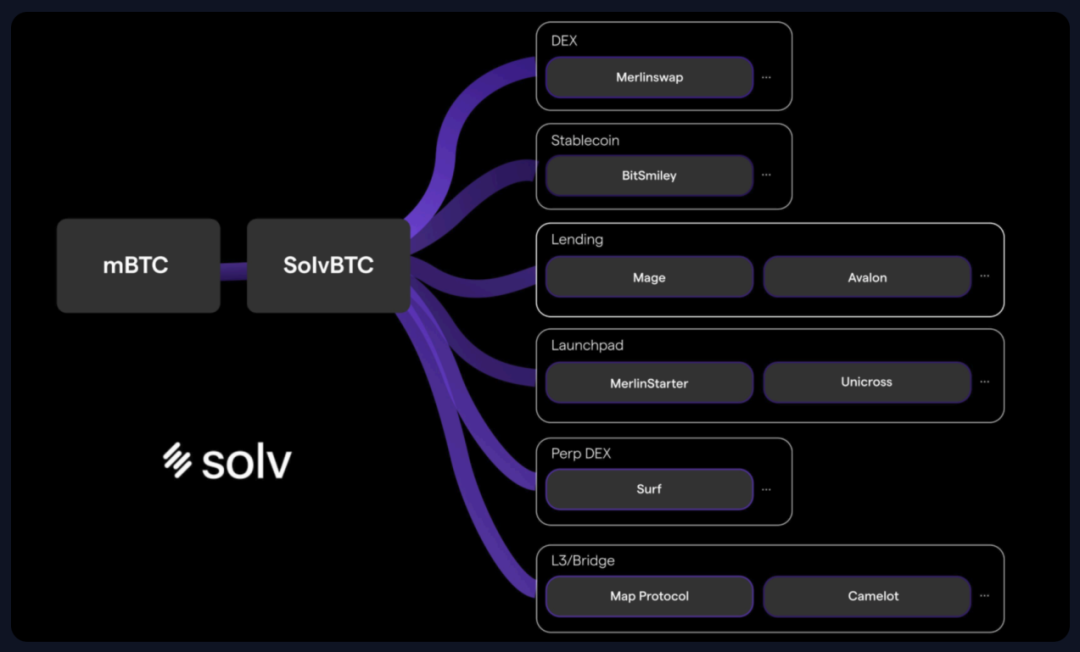
Solv Protocol is at the forefront of NFT financialization, enabling users to create, trade, and manage on-chain certificates. The protocol aims to tokenize and aggregate yields from various DeFi protocols within the Merlin Chain ecosystem. Its flagship product, SolvBTC, is a yield token that allows Bitcoin holders to earn yields while maintaining liquidity.
Solv Protocol is committed to building a robust liquidity layer through staking and other yield-generating activities. This flexibility makes it an important DeFi project on Merlin Chain, helping to unlock new financial opportunities within the Bitcoin ecosystem.
These projects highlight the dynamic and rapidly evolving nature of the Bitcoin DeFi space, with each project contributing unique functionalities to expand the ecosystem's coverage. As of September 8, 2024, Core leads the Bitcoin DeFi space, with its projects accounting for 25.2% of active projects, further solidifying its core role in the ecosystem. Rootstock and Bitlayer are significant participants, each supporting 13.0% of projects, reflecting their importance in enhancing liquidity and capital efficiency within the Bitcoin DeFi ecosystem. Merlin Chain also plays a key role in expanding Bitcoin DeFi functionalities with a 9.9% project share. Other platforms like BOB (8.4%), BSquared (6.9%), and Stacks (6.1%) contribute to the diversity of the ecosystem, while BEVM (5.3%), BounceBit (3.1%), and MAP Protocol (3.1%) drive overall growth through their specialized solutions.
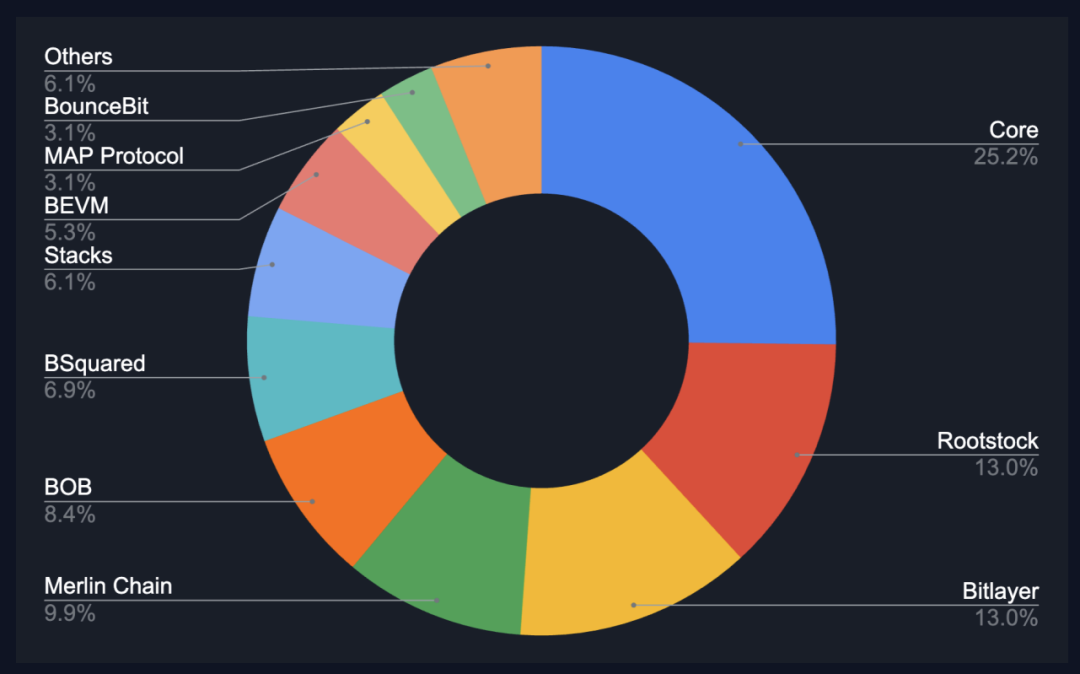
Pell Network, with a total locked value (TVL) of $260.8 million, has established itself as the leading DeFi project, confirming its leadership in the NFT finance space. Avalon Finance and Colend Protocol follow with TVLs of $206.2 million and $115.5 million, respectively, also being important participants. Other noteworthy projects include MoneyOnChain and Sovryn, showcasing the diversity within the BTCFi space, covering areas from liquidity mining to stablecoins.
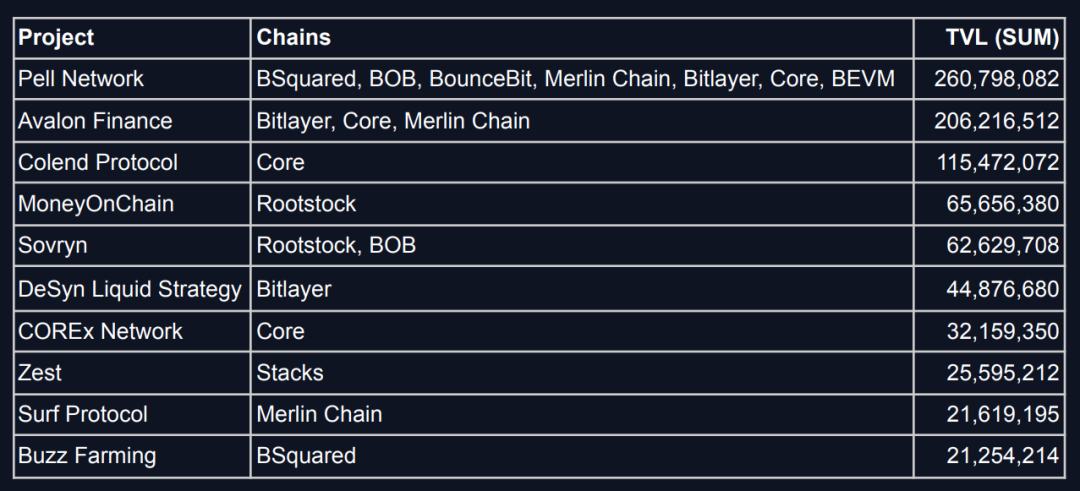
2) Key Narratives Among Major BTCFi Projects
Security and Decentralization First: The Bitcoin DeFi ecosystem is built on the core principles of security and decentralization. Bitcoin's unparalleled security framework is the foundation of the BTCFi ecosystem, ensuring that all innovations adhere to these fundamental principles.
Bitcoin as a Programmable Token: BTCFi is changing the role of Bitcoin, making it not just a store of value but a programmable token. This shift enables the possibility of a new generation of complex financial applications through the use of smart contracts. For example, Solv Protocol's SolvBTC is referred to as the "first yield-bearing Bitcoin," earning yields through neutral trading strategies in yield pools and providing returns in DeFi protocols like Ethereum, Arbitrum, and Merlin Chain.
Interoperability with Ethereum: BTCFi establishes bridges with Ethereum's DeFi ecosystem through EVM-compatible solutions, fully leveraging the strengths of both networks. This interoperability creates powerful synergies, combining Bitcoin's security with Ethereum's flexible smart contract capabilities. For instance, Core executes smart contracts via EVM, meaning decentralized applications (dApps) developed for Ethereum can easily transition to the Core blockchain without significant modifications.
Unlocking Bitcoin's Capital: The BTCFi ecosystem is releasing significant amounts of capital for DeFi purposes, providing yield opportunities while allowing users to retain exposure to Bitcoin investments, thereby expanding Bitcoin's utility and appeal in DeFi.
3) Comparative Analysis with Ethereum DeFi
As Bitcoin DeFi continues to evolve, comparing it with Ethereum DeFi becomes increasingly important. Specifically, attention should be paid to how Bitcoin operates within the Ethereum ecosystem through wrapped assets like wBTC and renBTC, and what lessons can be learned from Ethereum's development history.
4) Ethereum DeFi VS Bitcoin and Native Bitcoin DeFi
The integration of Bitcoin with the Ethereum DeFi ecosystem is primarily achieved through wrapped assets like wBTC and renBTC. These tokens enable Bitcoin holders to convert BTC into ERC-20 tokens, granting access to Ethereum's vast DeFi ecosystem, which can be utilized on Ethereum platforms like MakerDAO, Aave, and Uniswap.
There are significant differences in the use of BTC across these two ecosystems. As of September 8, the amount of BTC locked in Ethereum DeFi protocols is 153,400, far exceeding the 8,970 in the native Bitcoin DeFi ecosystem. This trend is attributed to Ethereum's mature and diverse DeFi infrastructure, which offers a wider range of financial products, including borrowing, trading, and liquidity mining.
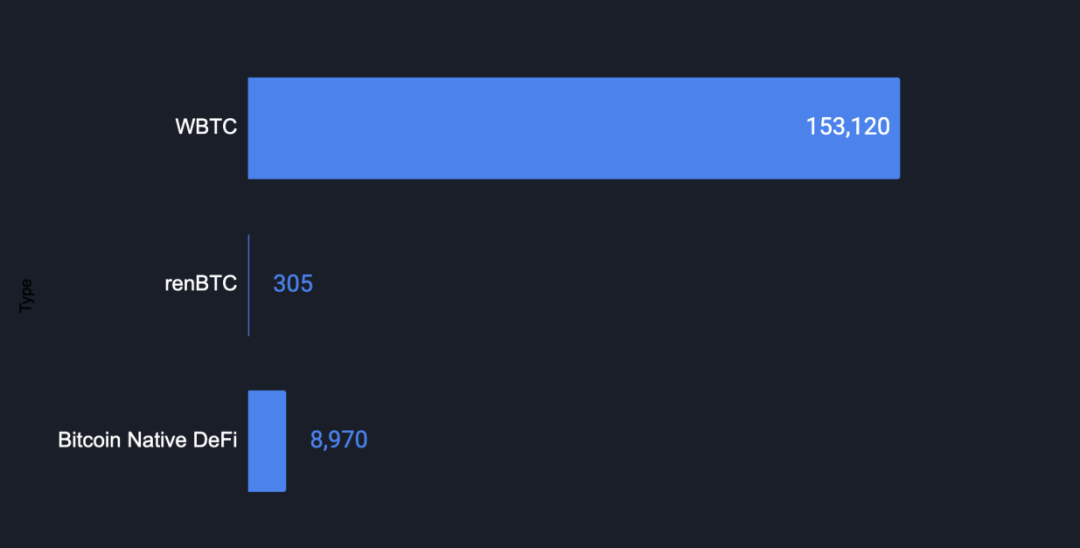
While wrapped Bitcoin tokens like wBTC provide users with liquidity and advanced DeFi functionalities, they also rely on custodians and cross-chain bridges, which may increase risks. In contrast, native Bitcoin DeFi projects, although smaller in scale, operate within Bitcoin's own security framework, avoiding many risks associated with cross-chain transfers. However, Bitcoin DeFi is still in its infancy, and the range of financial services offered remains limited compared to Ethereum.
06. Insights from Ethereum's Development for Bitcoin and Vice Versa
1) Lessons Bitcoin Can Learn from Ethereum:
Product Diversity: Ethereum's success in DeFi largely stems from its offering of a variety of financial products and services, such as DEXs and synthetic assets. To drive the development of Bitcoin DeFi, it is essential to expand its product range beyond just borrowing and stablecoin services. Developing more complex financial instruments and interoperability solutions could attract more users.
Developer Ecosystem: Ethereum has fostered an active developer community that continuously innovates and builds new projects on the platform. Bitcoin DeFi projects can also benefit from promoting a more vibrant developer ecosystem, encouraging the creation of new protocols and applications to leverage Bitcoin's advantages.
Interoperability: Ethereum's DeFi ecosystem performs well in terms of interoperability both internally and with other blockchains. Enhancing Bitcoin DeFi's interoperability with other chains (including Ethereum) could present new opportunities for users to leverage the strengths of both ecosystems.
2) Lessons Ethereum Can Learn from Bitcoin:
Security and Decentralization: Bitcoin's emphasis on security and decentralization is unparalleled. Ethereum projects can draw inspiration from Bitcoin's conservative approach to ensure that rapid innovation does not compromise these core principles. This is particularly important as Ethereum transitions to more scalable solutions (such as Layer 2), where security issues must be handled with care.
Simplicity and Robustness: While Bitcoin's scripting capabilities are relatively simple and robust, they lack flexibility, resulting in fewer vulnerabilities compared to Ethereum's complex smart contracts. Ethereum developers could prioritize maintaining simplicity and robustness in smart contract design to reduce security risks.
Focus on Value Storage: Although Ethereum is renowned for its smart contract capabilities, Bitcoin's dominance as a store of value remains strong. The Ethereum ecosystem could explore ways to enhance its value storage capabilities, potentially by integrating more Bitcoin-based assets to attract users who prioritize security and asset preservation.
Although Bitcoin DeFi is still in its early stages, it has significant growth potential if it learns from the experiences of Ethereum's mature ecosystem. At the same time, Ethereum can learn from Bitcoin's strengths in security and decentralization to further solidify its DeFi offerings. As both ecosystems evolve, their collaboration and mutual learning may drive the next growth phase of DeFi.
07. Challenges and Opportunities
As this field continues to develop, it must address technical and regulatory barriers, while technological advancements and emerging growth areas also present significant expansion opportunities.
1) Technical Barriers
The development of DeFi on Bitcoin faces numerous technical challenges. The first is scalability, which is a major issue due to Bitcoin's base layer having limited transaction processing capacity because of block size and block time constraints. Unlike Ethereum, which already has multiple mature Layer 2 solutions, Bitcoin's Layer 2 and sidechain ecosystem is still in its infancy, limiting the range of DeFi applications that can be effectively supported.
Secondly, interoperability is also a significant challenge. Connecting Bitcoin with other blockchain ecosystems without compromising security or decentralization is quite complex and requires innovative solutions.
2) Regulatory Concerns
As Bitcoin DeFi continues to evolve, regulatory scrutiny is expected to intensify. Governments and financial regulators may impose stricter regulations on DeFi services, particularly regarding AML and KYC. Bitcoin's decentralized and pseudonymous nature complicates compliance, which could impact the adoption and development of Bitcoin DeFi. Therefore, finding a balance within these regulatory environments is crucial for the sustainable growth of Bitcoin DeFi.
08. Future Opportunities
1) Technological Advancements
There is substantial room for technological advancements in Bitcoin DeFi. Improving Layer 2 solutions, such as more efficient and secure sidechains, as well as developing frameworks with greater scalability and interoperability, could significantly enhance the capabilities of the Bitcoin DeFi ecosystem. Additionally, advancements in discrete log contracts (DLCs) and privacy-preserving technologies (such as zero-knowledge proofs) could make more complex and secure financial applications a reality.
2) Predictions for Future Growth Areas
As the Bitcoin DeFi ecosystem matures, several areas show strong growth potential. Yield-generating products, DEXs, and cross-chain liquidity pools are expected to attract increasing attention. Meanwhile, as institutional interest in Bitcoin continues to grow, there is anticipated higher demand for DeFi products tailored to institutional needs, such as custody solutions, compliant financial instruments, and Bitcoin-backed stablecoins. These developments present high investment return opportunities for early adopters and innovators in the Bitcoin DeFi space.
09. Conclusion
Looking ahead, the Bitcoin DeFi ecosystem is set to continue expanding, driven by technological advancements and growing institutional interest. Developing more scalable Layer 2 solutions, enhancing interoperability, and launching more complex financial products are crucial for this expansion. As the ecosystem matures, yield-generating products, DEXs, and institutional-focused DeFi services are expected to attract significant attention and funding.
However, this growth will also face challenges, particularly in addressing the evolving regulatory landscape and overcoming technical issues related to scalability and security. Addressing these challenges is vital for maintaining the growth momentum of Bitcoin DeFi and ensuring its long-term success.
In summary, the future of Bitcoin DeFi looks promising, with abundant opportunities for innovation and growth. As the ecosystem continues to evolve, it has the potential to make a profound impact on the broader DeFi landscape and position Bitcoin as a core participant in DeFi.
免责声明:本文章仅代表作者个人观点,不代表本平台的立场和观点。本文章仅供信息分享,不构成对任何人的任何投资建议。用户与作者之间的任何争议,与本平台无关。如网页中刊载的文章或图片涉及侵权,请提供相关的权利证明和身份证明发送邮件到support@aicoin.com,本平台相关工作人员将会进行核查。




